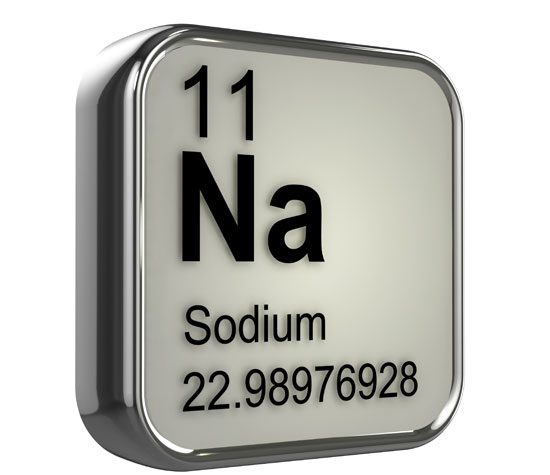Na Na Na Na (Hey Hey Hey) Sodium!

An image showing the symbol, atomic number and relative atomic mass of sodium. Sodium’s symbol is Na, its atomic number is 11 and its relative atomic mass is approximately 22.99. Image © istockphoto.com/3dalia

An image showing the symbol, atomic number and relative atomic mass of sodium. Sodium’s symbol is Na, its atomic number is 11 and its relative atomic mass is approximately 22.99. Image © istockphoto.com/3dalia
6.25
How does this align with my curriculum?
Curriculum Alignment
AB
11
Knowledge and Employability Science 20-4 (2006)
Unit A: Applications of Matter and Chemical Change
BC
7
Science Grade 7 (June 2016)
Big Idea: Elements consist of one type of atom, and compounds consist of atoms of different elements chemically combined.
NU
9
Knowledge and Employability Science 9 (Alberta, Revised 2009)
Unit B: Matter and Chemical Change
NU
11
Knowledge and Employability Science 20-4 (Alberta, 2006)
Unit A: Applications of Matter and Chemical Change
NU
11
Chemistry 20 (Alberta, 2007, Updated 2014)
Unit A: The Diversity of Matter and Chemical Bonding
ON
10
Science Grade 10 Applied (SNC2P)
Strand C: Chemical Reactions and Their Practical Applications
YT
7
Science Grade 7 (British Columbia, June 2016)
Big Idea: The electromagnetic force produces both electricity and magnetism.
NT
9
Knowledge and Employability Science 9 (Alberta, Revised 2009)
Unit B: Matter and Chemical Change
NT
11
Knowledge and Employability Science 20-4 (Alberta, 2006)
Unit A: Applications of Matter and Chemical Change
NT
11
Chemistry 20 (Alberta, 2007, Updated 2014)
Unit A: The Diversity of Matter and Chemical Bonding
NT
10
Knowledge and Employability Science 10-4 (Alberta, 2006)
Unit A: Investigating Properties of Matter
BC
9
Science Grade 9 (June 2016)
Big Idea: The electron arrangement of atoms impacts their chemical nature.
YT
9
Science Grade 9 (British Columbia, June 2016)
Big Idea: The electron arrangement of atoms impacts their chemical nature.
BC
11
Earth Sciences 11 (June 2018
Big Idea: Earth materials are changed as they cycle through the geosphere and are used as resources, with economic and environmental implications.
BC
12
Geology 12 (June 2018)
Big Idea: Minerals, rocks, and earth materials form in response to conditions within and on the Earth’s surface and are the foundation of many resource-based industries.
ON
11
Environmental Science, Grade 11, Workplace (SVN3E)
Strand E: Natural Resource science and Management
YT
11
Earth Sciences 11 (British Columbia, June 2018
Big Idea: Earth materials are changed as they cycle through the geosphere and are used as resources, with economic and environmental implications.